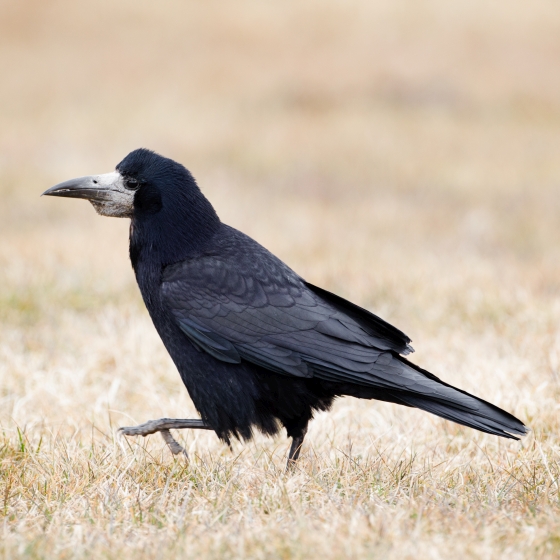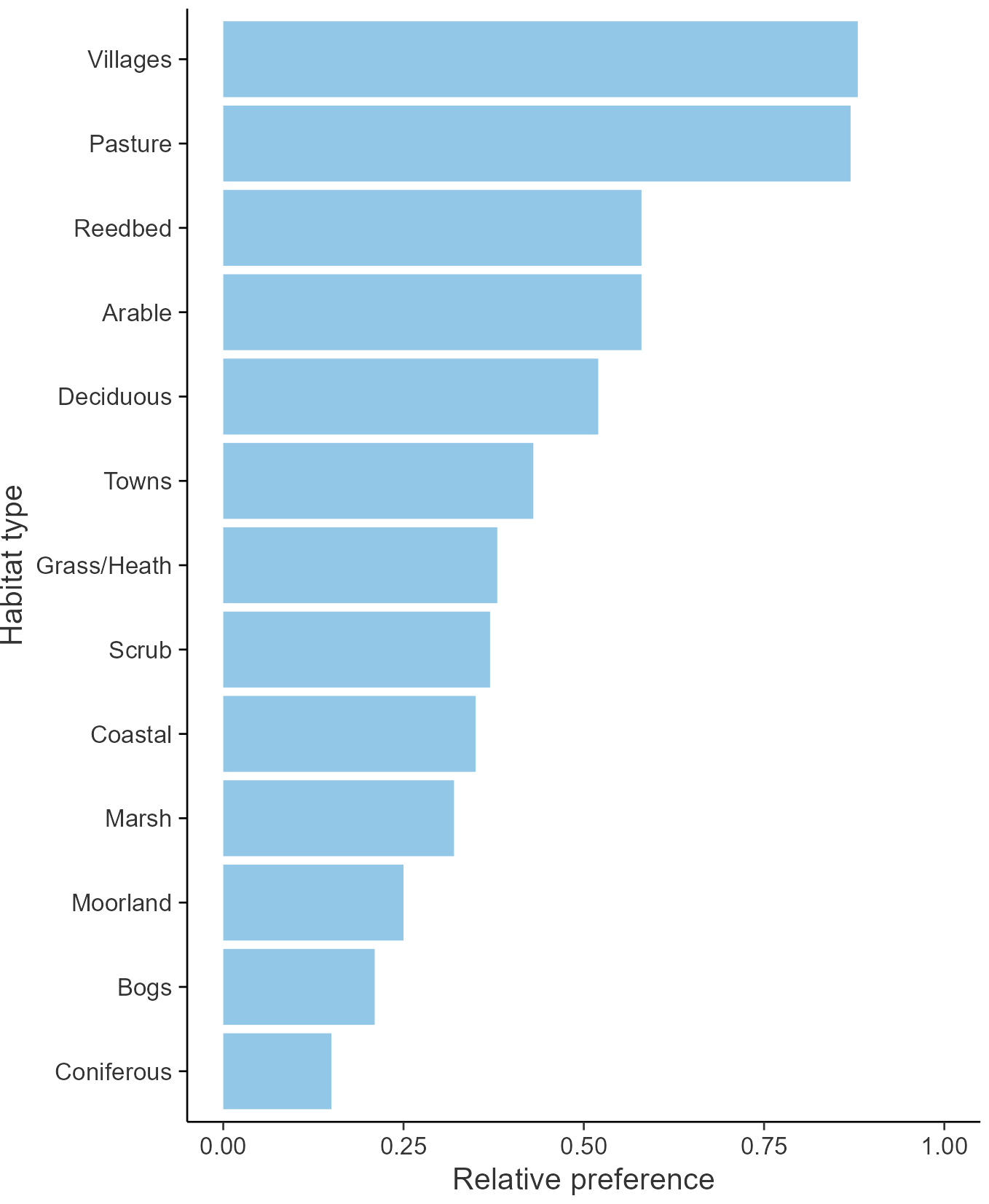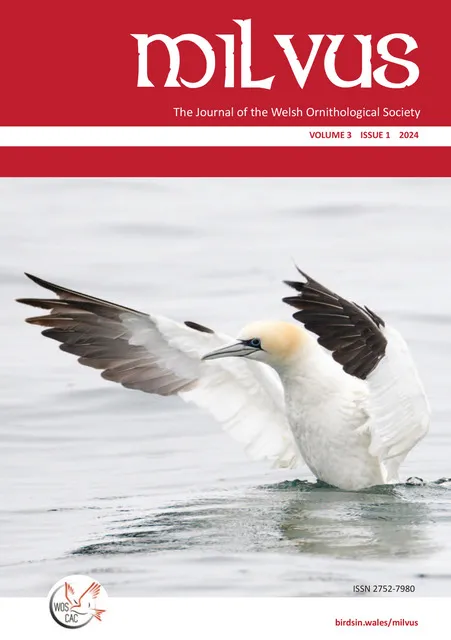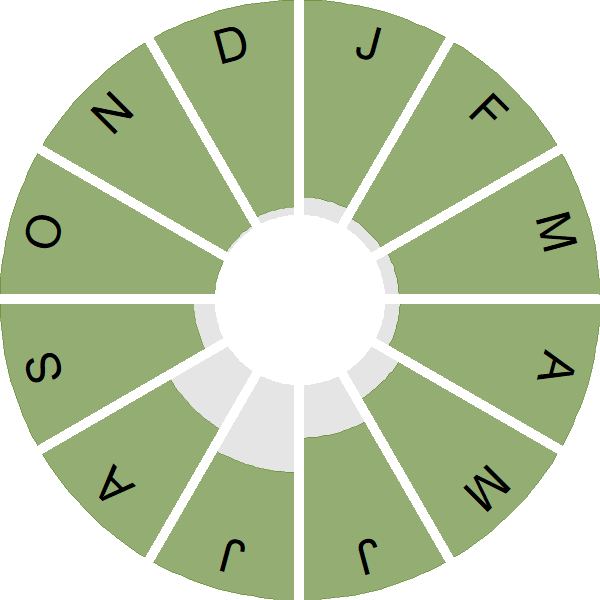Rook

Introduction
Of the five species of black 'crows' found in the UK, the Rook can be told by its cone-shaped head and bare-skinned face.
The Rook is a very sociable bird. It feeds in large, garrulous flocks in its favoured farmland habitat, seeking out a variety of seeds, roots and soil invertebrates. Rooks are colonial nesters, building their nests within a metre or two of their neighbours. Once established, these rookeries can be enduring; some are known to have been in use at the same site for over 100 years.
The Rook is a widespread and common bird, found all across the UK. It is a resident species that has experienced population declines since about the year 2000, particularly in Wales and Scotland.
- Our Trends Explorer gives you the latest insight into how this species' population is changing.

Key Stats
Identification
ID Videos
This section features BTO training videos headlining this species, or featuring it as a potential confusion species.
Corvids
Songs and Calls
Call:
Status and Trends
Conservation Status
Population Change
Relatively few rookeries fell within CBC plots, but an index calculated from the available CBC nest counts showed a shallow, long-term increase (Wilson et al. 1998). Increase to the mid 1990s was confirmed by the results of the most recent BTO rookeries survey, which identified a 40% increase in abundance between 1975 and 1996 (Marchant & Gregory 1999). This increase probably reflected the species' considerable adaptability in the face of agricultural change. BBS indices, which are drawn from sightings during transect walks and not from BBS's nest counts, suggest that a notable decrease has occurred subsequently, affecting all countries within the UK, particularly Wales and Scotland. The BBS map of change in relative density between 1994-96 and 2007-09 indicates that there had been increases during that period in Northern Ireland and in lowland regions of England and Wales but decreases in many upland areas and in eastern coastal areas of Scotland. There has been little change in breeding productivity since the 1960s but a decrease in brood size is now becoming evident. There has been an increase across Europe since 1980 (PECBMS: PECBMS 2020a>).
Distribution
Rooks maintain a nearly ubiquitous distribution across much of Britain & Ireland. Though they are absent from larger conurbations, such as London, the lowland distribution of Rooks includes virtually every 10-km square with major gaps confined to higher ground in Scotland, parts of northern England, Wales and the rugged far northwest of Ireland. Rooks favour open, lowland countryside, being less abundant through the wooded Wealden counties of England, for example, than in the arable east of Britain or the eastern and southern counties of Ireland. In general, Rooks are more abundant in Ireland than in Britain.
Occupied 10-km squares in UK
or view it on Bird Atlas Mapstore.
or view it on Bird Atlas Mapstore.
European Distribution Map
Distribution Change
There have been only relatively small changes in the distribution of Rooks over the last 40 years. Since the 1968–72 Breeding Atlas some losses have occurred in and around the fringes of the species' northerly range, in the Scottish Highlands, and also in northwest Ireland.
Change in occupied 10-km squares in the UK
or view it on Bird Atlas Mapstore.
or view it on Bird Atlas Mapstore.
Seasonality
Rook is recorded throughout the year on up to 30% of complete lists.
Weekly pattern of occurrence
The graph shows when the species is present in the UK, with taller bars indicating a higher likelihood of encountering the species in appropriate regions and habitats.

Habitats
Breeding season habitats
Relative frequency by habitat
The graph shows the habitats occupied in the breeding season, with the most utilised habitats shown at the top. Bars of similar size indicate the species is equally likely to be recorded in those habitats.

Movement
Britain & Ireland movement
Foreign locations of birds ringed or recovered in Britain & Ireland
Dots show the foreign destinations of birds ringed in Britain & Ireland, and the origins of birds ringed overseas that were subsequently recaptured, resighted or found dead in Britain & Ireland. Dot colours indicate the time of year that the species was present at the location.
- Winter (Nov-Feb)
- Spring (Mar-Apr)
- Summer (May-Jul)
- Autumn (Aug-Oct)

European movements
EuroBirdPortal uses birdwatcher's records, such as those logged in BirdTrack to map the flows of birds as they arrive and depart Europe. See maps for this species here.
The Eurasian-African Migration Atlas shows movements of individual birds ringed or recovered in Europe. See maps for this species here.
Biology
Productivity and Nesting
Nesting timing
Egg measurements
Clutch Size
Incubation
Fledging
Survival and Longevity
Survival is shown as the proportion of birds surviving from one year to the next and is derived from bird ringing data. It can also be used to estimate how long birds typically live.
View number ringed each year in the Online Ringing Report.
lifespan
Survival of adults
Survival of juveniles
Biometrics
Wing length and body weights are from live birds (source).
Wing length
Body weight
Ring Size
Classification, names and codes
Classification and Codes
- Order: Passeriformes
- Family: Corvidae
- Scientific name: Corvus frugilegus
- Authority: Linnaeus, 1758
- BTO 2-letter code: RO
- BTO 5-letter code: ROOK.
- Euring code number: 15630
Alternate species names
- Catalan: graula
- Czech: havran polní
- Danish: Råge
- Dutch: Roek
- Estonian: künnivares
- Finnish: mustavaris
- French: Corbeau freux
- Gaelic: Ròcais
- German: Saatkrähe
- Hungarian: vetési varjú
- Icelandic: Bláhrafn
- Irish: Rúcach
- Italian: Corvo comune
- Latvian: kraukis
- Lithuanian: paprastasis kovas
- Norwegian: Kornkråke
- Polish: gawron (zwyczajny)
- Portuguese: gralha-calva
- Slovak: havran cierny
- Slovenian: poljska vrana
- Spanish: Graja
- Swedish: råka
- Welsh: Ydfran
Research
Causes of Change and Solutions
Causes of change
There is little good evidence available regarding the drivers of the breeding population increase in this species in the UK.
Further information on causes of change
No further information is available.
Information about conservation actions
Although it is believed that numbers increased during the late twentieth century, the drivers of the subsequent decline in the current century are unknown and further research is needed before evidence-based conservation actions can be proposed to reverse the recent declines.
In the meantime and until further research confirms the drivers of the population changes, actions to restore or create species-rich grassland and to provide other foraging habitats may benefit rooks. As a colonial nesting species, it could also be vulnerable to exploitation of rookeries by humans and predators, and therefore actions and policies to protect breeding sites may also be prudent.
Publications (2)
Status and distribution of Rook Corvus frugilegus in Wales in 2022/23
Author: Hereward, H.F.R., Brenchley, A., Facey, R.J., Hughes, J., Lindley, P.J., Taylor, R.C., Wilson, M.W. & Macgregor, C.J.
Published: 2024
In 2022 and 2023, the Welsh Ornithological Society (WOS) coordinated a countrywide colony survey of Rooks in Wales, to estimate population and distribution size and change.
25.12.24
Papers

Birds of Conservation Concern Wales 4: the population status of birds in Wales
Author: Johnstone, I.G., Hughes, J., Balmer, D.E., Brenchley, A., Facey, R.J., Lindley, P.J., Noble, D.G. & Taylor, R.C.
Published: 2022
The latest review of the conservation status of birds in Wales. The report assessed all 220 bird species which regularly occur in Wales. There are now 60 species of bird on the Red List, with 91 on the Amber List and just 69 - less than a third of the total number of species - on the Green List.
06.12.22
Reports Birds of Conservation Concern


